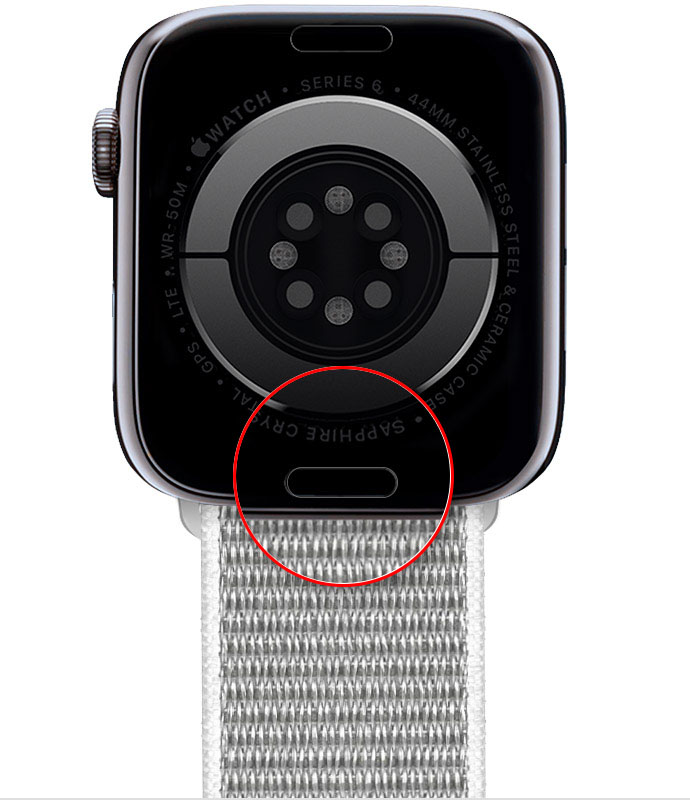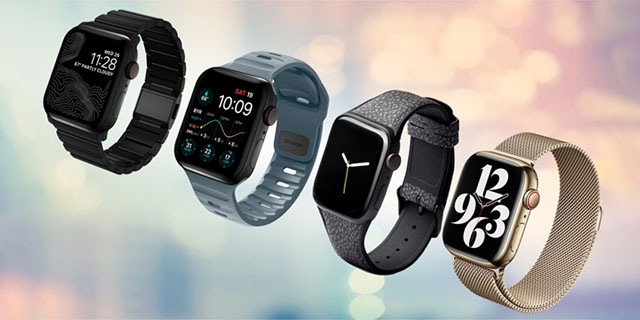The Apple Watch transcends the conventional notion of a timepiece. Once you’ve connected your Apple Watch to your iPhone, it can track your fitness, receive notifications, and do much more.
The best part of the Apple Watch is that you can easily change its band to suit different occasions. Unsure of how to do this, though? This guide will teach you how to change your Apple Watch band.
How to Change an Apple Watch Link Bracelet
Apple products are known for their signature modern and sophisticated design. The Apple Watch band is no exception. It comes in a variety of styles and functionality purposes. Therefore, the process for changing your band differs slightly depending on what Apple Watch band you’re using.
Some bands, like the Apple Watch Link Bracelet, separate into two pieces. So, there’s an extra step involved in removing such bands from your Apple Watch.
Here are the steps to change your Apple Watch Link Bracelet:
- Lay your Apple Watch face down on a soft, clean surface to avoid any damage to the watch face. Press and hold the Quick Release button on the inside of the link bracelet to separate the band into two parts and gently pull it apart.

- Press and hold the Release button on the backside of the watch and simultaneously slide the band out to remove it.

- Repeat the process for the second band.
- Ensure the new band is the right way up by checking that the text on the band faces you. Align and attach the new watch band by sliding it into the connector until you hear a Click.

- Repeat the process for the second band.
- Test that the bands have been correctly connected by tugging them gently. Fit the watch band around your wrist and click the connector closed to wear your newly fitted link bracelet.
Your watch band may get jammed in the connector while removing it. Simply let go of the release button, press it again, and continue sliding it out to resolve this issue.
How to Change an Apple Watch Milanese Loop Band
Unlike the Apple Watch Link Bracelet, the Apple Watch Milanese Loop doesn’t separate into two parts. It, and the Solo Loop Bracelet, are a single continuous piece that connects to the watch on both ends, so the steps to remove them are identical.
However, the Apple Watch Milanese Loop is made from high-quality stainless steel as opposed to the soft, elastic material of the Solo Loop. Furthermore, the Milanese Loop’s size can be adjusted and fixed in position via a magnetic connector.
This is how to change your Apple Watch Milanese Loop band:
- Lay your Apple Watch face down on a soft, clean surface to avoid any damage to the watch face.
- Press and hold the Release button on the backside of the watch while sliding the band out to remove it.

- Repeat Step 2 for the other end of the band.
- Ensure the new band is the right way up by checking that the text on the band faces you. Align and attach the new watch band. Slide it into the connector until you hear a Click.

- Repeat Step 4 for the other end of the band.
- Test that the band has been correctly connected by tugging it gently. Wrap the band around your wrist by sliding the magnetic end through the band connector and adjust the fitting.

Only Milanese Loop bands produced after 2018 are fitted with the feature that allows you to pass the magnetic end through the band connector.
Apple Watch Band Compatibility
The main factor when determining compatibility is the size of the band and the watch itself. It doesn’t matter what band you have; it will always be able to connect to any Apple Watch. However, different versions of the Apple Watch vary in case size. Thus, before you rush out to purchase the band of your dreams, you should check the compatibility to ensure the right fit and aesthetic.
- Apple Watch Ultra and Ultra 2: The newest and largest Apple Watch series available. Its case size is 49 millimeters and is compatible with bands that have been designed for 44, 45, and 49-millimeter cases.
- Apple Watch Series 8 and 9: Both these models are available in 41-millimeter and 45-millimeter case sizes. The 45 millimeters are compatible with bands designed for 42, 44, and 45-millimeter cases. Alternatively, the 41-millimeter version is compatible with bands designed for 38, 40, and 41-millimeter cases.
- Apple Watch SE, 4, 5, and 6: All of these models are available in 40-millimeter and 44-millimeter case sizes. The 44-millimeter version is compatible with bands designed for 42, 44, and 45-millimeter cases. Alternatively, the 40-millimeter version is compatible with bands designed for 38, 40, and 41-millimeter cases.
- Apple Watch Series 3: The older series 3 Apple Watch comes in 38-millimeter and 42-millimeter case sizes. The 42-millimeter version is compatible with bands designed for 42, 44, and 45-millimeter cases. Alternatively, the 38-millimeter model is compatible with bands designed for 38, 40, and 41-millimeter cases.
Check out our comparison of different Apple Watch models to learn how they are different.
Types of Apple Watch Bands
There is a huge range of band designs out there to pair perfectly with any outfit. Furthermore, they’re made from a host of different materials. The diversity of options allows you to change your band to suit any occasion, from fancy events to hiking trips. In addition to Apple’s extensive range of bands, there is a litany of third-party companies that produce bands for the Apple Watch. This article isn’t long enough to cover them all, so it will focus only on the main ones.
- Sport Band: This was one of the first bands released for the Apple Watch and is often considered the default band for the Apple Watch. It’s available in over 100 colors and is specifically crafted for durability to handle the toughest situations. For example, they’re adjustable, water-resistant, and designed to not stick to your body when sweating.
- Milanese Loop Bands: These bands are made from high-quality stainless steel and come in a range of colors and styles. The class and elegance of these bands make them ideal if you’re aiming for a sophisticated look. Furthermore, they’re fitted with a magnetic clasp, so you can easily adjust their size.
- Apple Ultra Bands: Alongside the release of the Apple Watch Ultra, Apple dropped three new bands: the Alpine Loop, Trail Loop, and the Ocean Band. Each has its unique style and purpose.
- Solo Loop Bands: Unlike the other bands, the Solo Loop isn’t adjustable. Therefore, you must ensure you get the correct size when buying one. They’re made from a stretchable material can easily slide on and off your wrist.
Strap on and Go
There’s an impressive catalog of Apple Watch bands to match your preference perfectly. Furthermore, its uncomplicated design means you can change the watch strap whenever you feel the urge.
Swapping your Apple Watch bands out is easy to do. Similarly, it is easy to find your lost or stolen Apple Watch as long as you have Find My enabled.
Disclaimer: Some pages on this site may include an affiliate link. This does not effect our editorial in any way.










